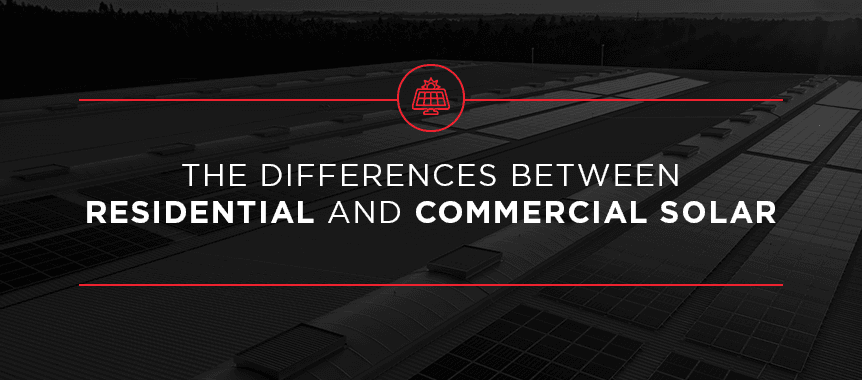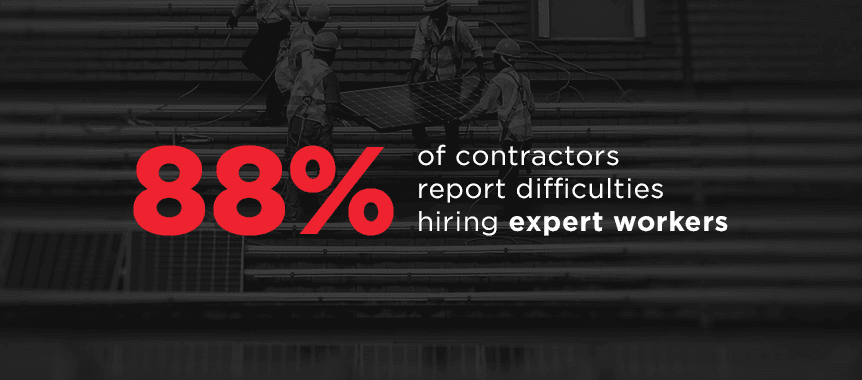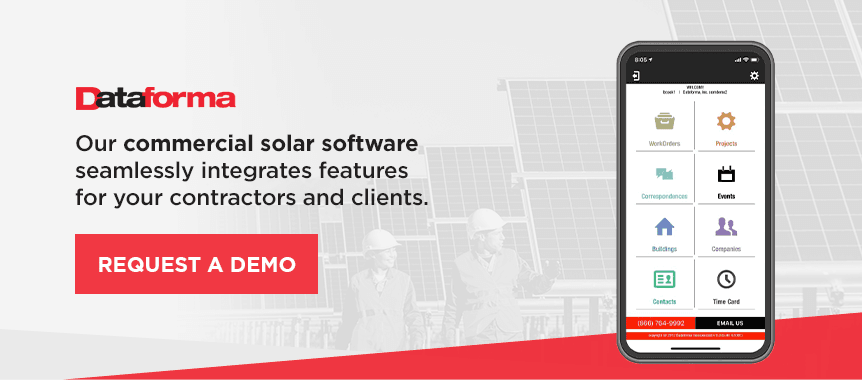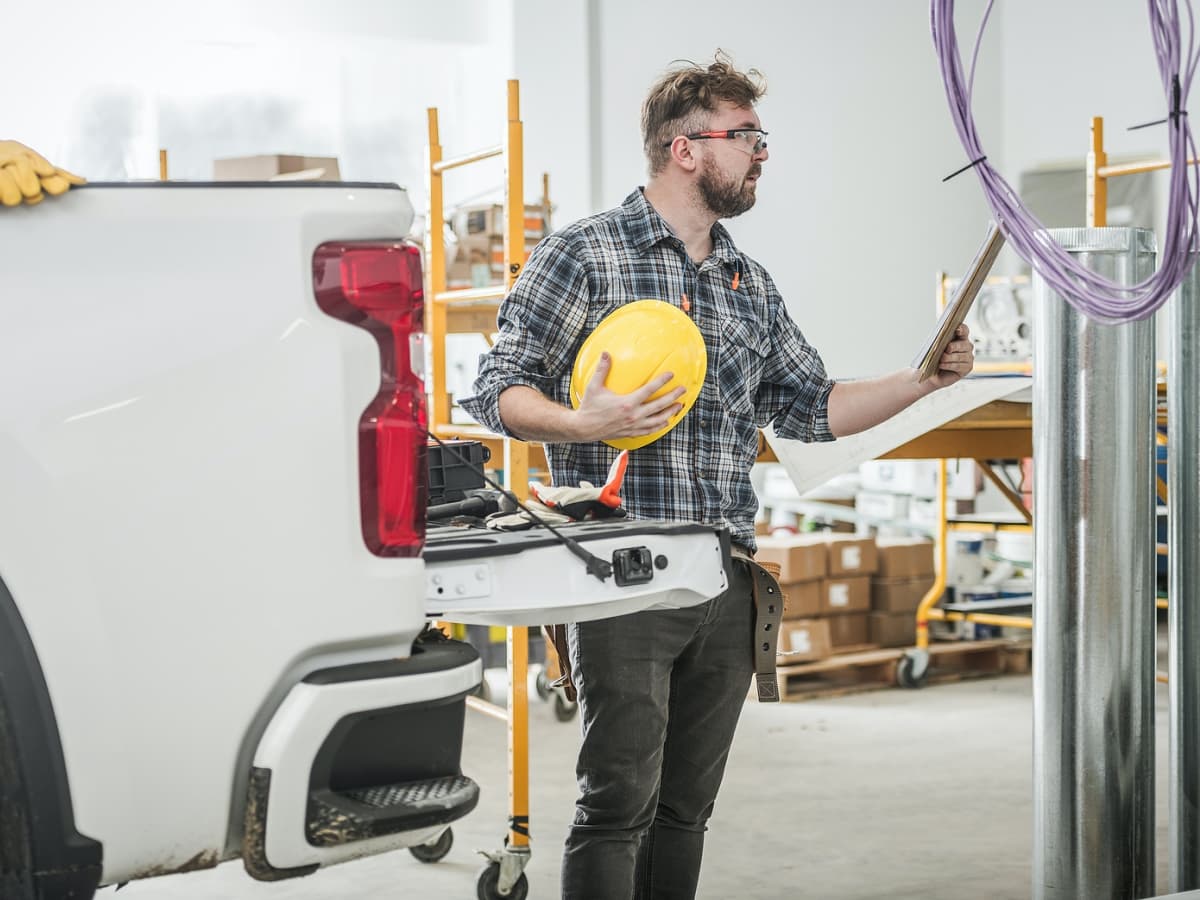
The solar industry has a bright future ahead, with a 42% annual growth rate over the past decade. As hardware costs decrease and demand rises, solar becomes a more promising energy source. In such a competitive industry, it’s essential to maximize your productivity and stay on top. If you’re considering offering commercial solar services, you’re already ahead of the game.
With extra planning and commitment, you can give your clients enhanced energy efficiency and incredible long-term value. Commercial solar also boosts earnings and savings over time, making the transition well worth it.
The Solar Panel Installation Process
Solar installation companies use a bolted racking system for both residential and commercial installations. Also called solar mounting, solar racking holds the equipment in place for a smooth, safe installation. Solar racking products usually consist of aluminum, a durable and lightweight metal suitable for rooftop projects. Racking systems can vary, but some standard components include:
- Flashing: Panel installation often involves drilling holes in the roof. Because the holes can be susceptible to leaks, solar installers insert flashing underneath the shingles to prevent water damage. Flashing is typically made with aluminum or another thin metal material.
- Mounts: Also known as feet, mounts secure the solar panel system to the roof. To ensure the rafters can accommodate mounts, solar installers will inspect the underside of the roof during the initial visit.
- Rails: Solar panels sit on top of these aluminum tracks, which can be installed either vertically or horizontally. Rails create a more efficient, appealing setup for solar panels by reducing clutter and providing a clear space for the wiring.
- Clamps: Clamps fasten solar panels to the rails. Mid-clamps go between the panels to hold them in place on both sides, while larger end-clamps secure the edges of the array.
While residential and commercial projects use the same racking system, some key differences between the two may impact the installation process. Commercial and residential installations differ in:
- Project length: Because commercial roofs are larger, an installation project will take longer to complete. Some commercial systems can take weeks or months to finish.
- Communication: Since commercial projects tend to take longer, communication is more important than ever. Straightforward proposals and a transparent contract can help set reasonable expectations for all involved parties.
- Complexity: Many commercial roofs are flat, allowing for easier installation. Non-penetrating mounting systems can further simplify the process.
Roof Installation Process
Each commercial solar project differs in completion time and scale depending on your client’s needs. However, a typical roof installation involves:
- Obtaining a solar installation permit from the local government.
- Evaluating the site to ensure it has high solar potential and meets the requirements for installation. Installers will also map out a wiring plan to show where and how the system will connect to an electrical grid.
- Finalizing the installation. The contractor will provide a drawing that outlines panel arrangements for maximum efficiency and the construction process.
- Preparing and securing the roof’s shingles or tiles for installation.
- Installing electrical wiring and connecting it to a power source.
- Attaching a secure racking system to support the solar panels.
- Mounting the panels.
- Connecting inverters to the panels to convert direct current (DC) energy into alternating current (AC) energy for your client to use.
The Technical Complexity of Commercial Solar
Commercial solar requires more planning than residential solar. From equipment with higher power ratings to possible transformer upgrades, you’ll need the tools and knowledge to make the transition.

Hiring certified, experienced technicians is the best way to streamline your business. However, skilled roofers can be hard to come by — 88% of contractors report difficulties hiring expert workers. Strategies to find and retain professional employees include:
- Increasing workforce size: United States workers experience the highest amount of workplace stress, with 57% reporting it daily. Increasing the size of your workforce will ensure a reasonable workload for everyone, resulting in maximum productivity. Happier, healthier employees will provide better services for your customers.
- Using professional software: Using professional service management software can attract the professional designers and firms you need to wow your customers. Your contractors will benefit from software that lets them get work done faster and more efficiently. Integrated commercial solar software also offers a better client experience.
- Providing training: Providing videos, webinars and other training programs is essential for retaining employees, especially millennial workers. According to the latest statistics, 59% of millennials value job development opportunities. As the solar industry shifts to younger demographics, you can give yourself an edge over other companies by helping your contractors reach new personal bests.
Solar Project Costs
Commercial solar projects may have a larger initial price tag but are more cost and energy-efficient overall. It’s worth it to install commercial solar panels due to their increased output. With greater power and improved energy production, commercial modules will pay for themselves over the years. The cost per watt tends to be lower than that of a residential installation, making commercial solar a profitable, sustainable service. Both your business and your clients will benefit from:
- A higher cell count: A solar panel’s cell count determines its energy efficiency. Commercial panels have more cells for more productivity, making them the most practical solution for the solar industry’s biggest opportunity.
- Larger panels: Larger commercial panels capture more sunlight and produce energy more efficiently. Combined with an increased cell count, your customers can have a more reliable power source in any region or time of year.
- Bulk hardware: Buying your hardware in bulk will ensure your team has the necessary materials for any job. Bulk buying can also save you money.
When transitioning to commercial solar, you should also consider solar energy’s soft costs and how to minimize them. Examples of soft costs include:
- Customer acquisition.
- Inspections and permits.
- Labor costs.
- Hardware taxes.
- Supply transportation, storage and production.
- Administrative costs, such as buying office supplies and renting a workspace.
Optimize Management With Commercial Solar Software From Dataforma
Dataforma is your trusted partner for managing commercial solar proposals and projects. Solar industry professionals developed our management software with businesses like yours in mind — you’ll have a solution and a team that meets your specific needs. Our comprehensive commercial solar software has seamlessly integrated features for your contractors and clients, including:
- Mobile tools and notifications.
- Drag-and-drop scheduling.
- Custom panel inspection reports.
- GPS tracking.
- Lead management.
- Paperless services.
Whether you’re working in the field or the office, you’ll have the information and tools you need to complete projects in the palm of your hand. We constantly improve our products so you can rely on your commercial solar proposal software for countless jobs to come. Request a free demo today to experience the Dataforma difference.











